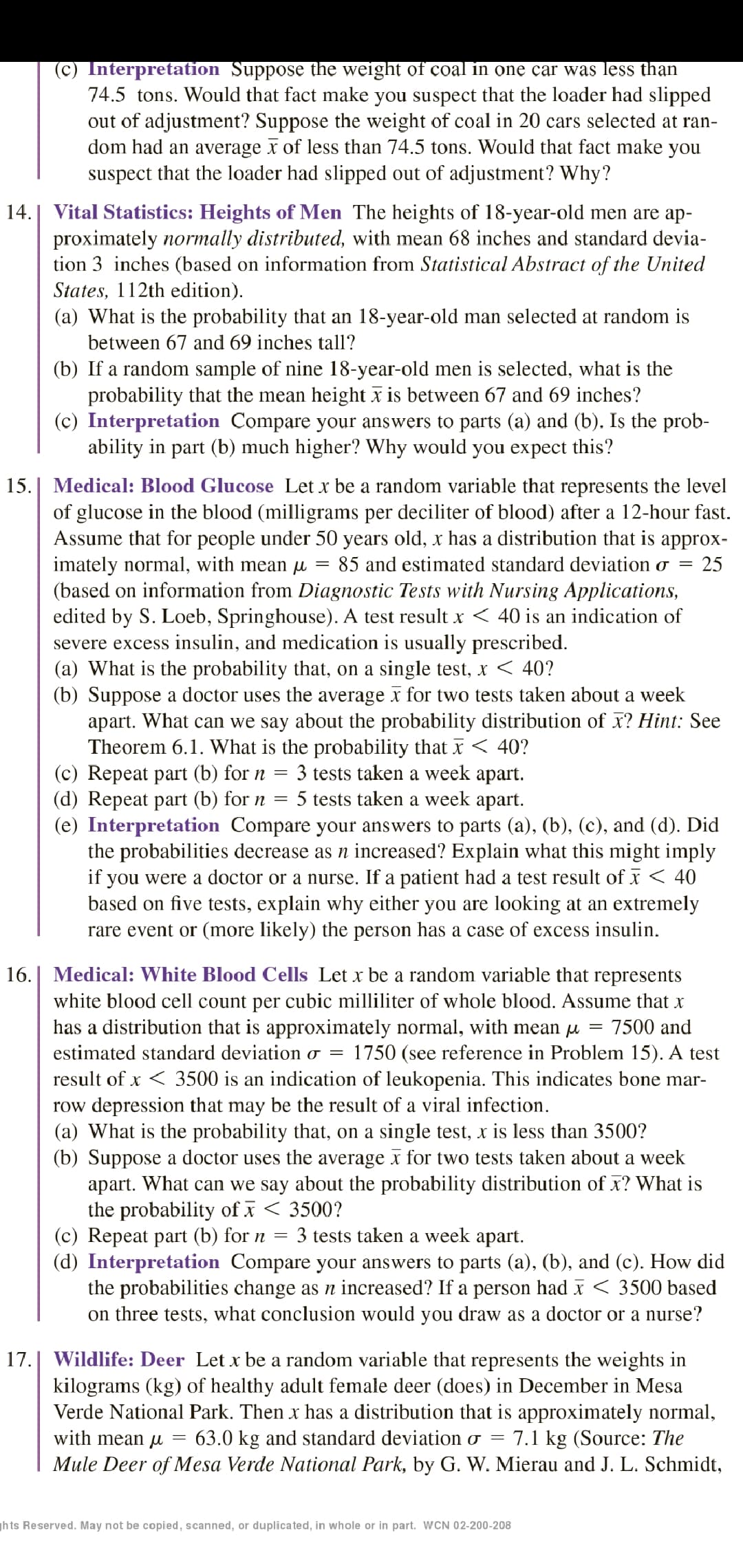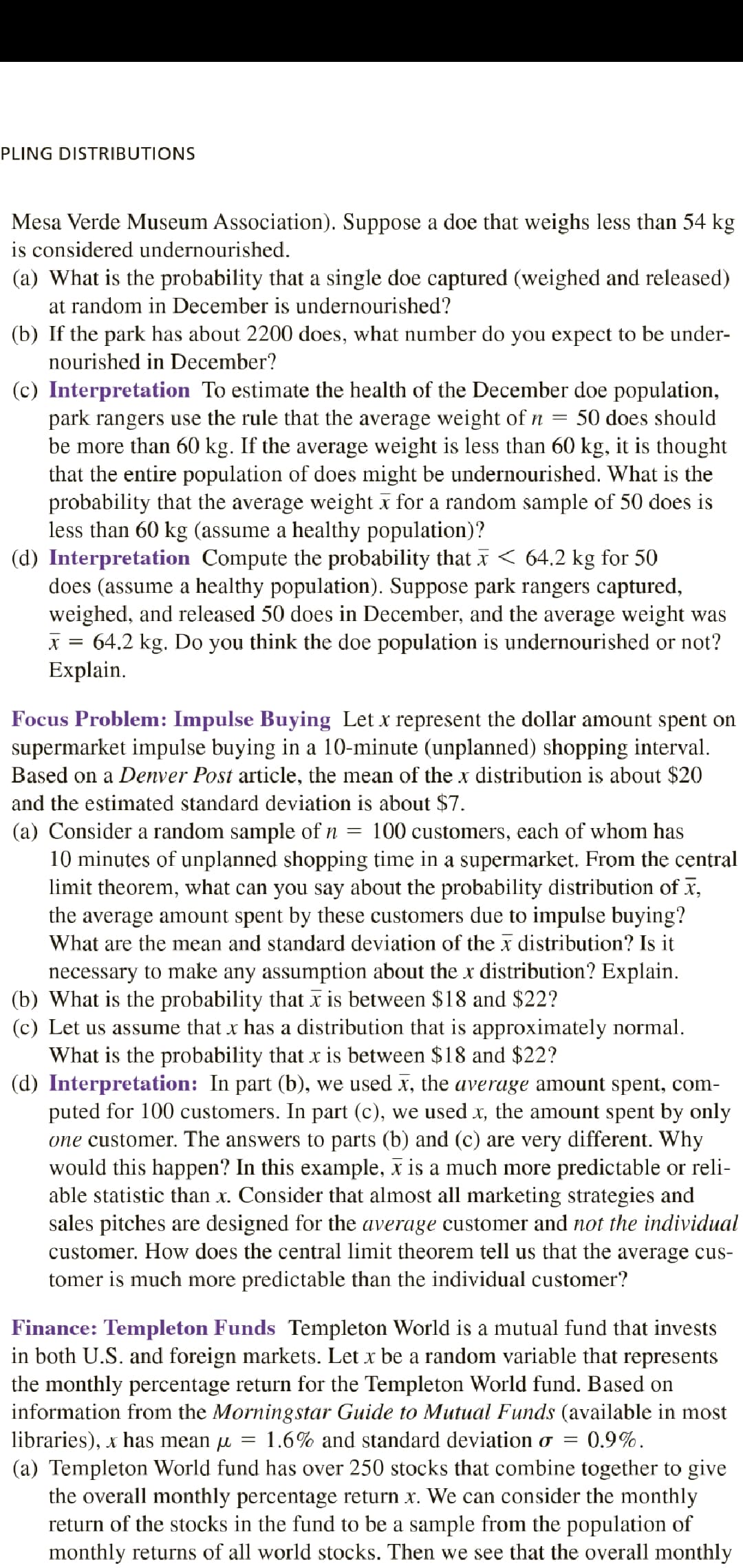Mesa Verde Museum Association). Suppose a doe that weighs less than 54 kg is considered undernourished. (a) What is the probability that a single doe captured (weighed and released) at random in December is undernourished? (b) If the park has about 2200 does, what number do you expect to be under- nourished in December? (c) Interpretation To estimate the health of the December doe population, park rangers use the rule that the average weight of n = be more than 60 kg. If the average weight is less than 60 kg, it is thought that the entire population of does might be undernourished. What is the probability that the average weight x for a random sample less than 60 kg (assume a healthy population)? (d) Interpretation Compute the probability that i< 64.2 kg for 50 does (assume a healthy population). Suppose park rangers captured, weighed, and released 50 does in December, and the average weight was 64.2 kg. Do you think the doe population is undernourished or not? Explain. 50 does should 50 does is
Unitary Method
The word “unitary” comes from the word “unit”, which means a single and complete entity. In this method, we find the value of a unit product from the given number of products, and then we solve for the other number of products.
Speed, Time, and Distance
Imagine you and 3 of your friends are planning to go to the playground at 6 in the evening. Your house is one mile away from the playground and one of your friends named Jim must start at 5 pm to reach the playground by walk. The other two friends are 3 miles away.
Profit and Loss
The amount earned or lost on the sale of one or more items is referred to as the profit or loss on that item.
Units and Measurements
Measurements and comparisons are the foundation of science and engineering. We, therefore, need rules that tell us how things are measured and compared. For these measurements and comparisons, we perform certain experiments, and we will need the experiments to set up the devices.
#17


Trending now
This is a popular solution!
Step by step
Solved in 4 steps with 2 images









